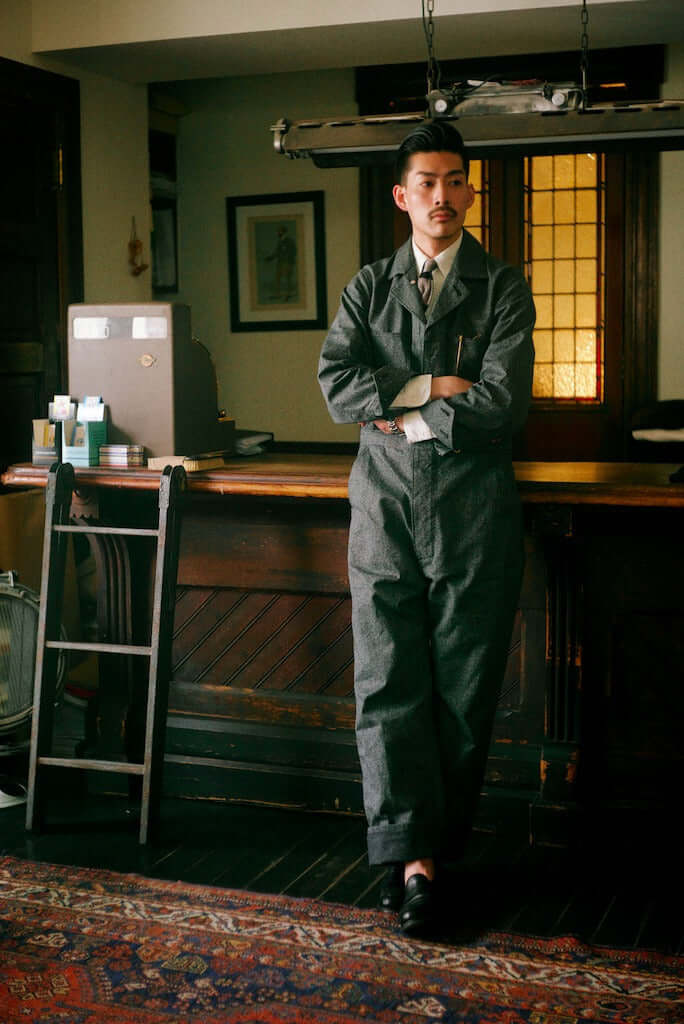
After the First World War, an ideological battle was being fought across the globe for the hearts and minds of the population. Manifestos were drawn up from the left, the right and the centre to try and shape every facet of the coming age. Even a man’s wardrobe was not exempt from proclamation and scrutiny.
In the newly formed Soviet Union, Alexander Rodchenko and his Constructivists were attempting to revolutionise every aspect of life; incorporating work, leisure and culture into one holistic organism. Rodchenko was famously photographed in his jumpsuit; attire marrying the proletarian roots of his movement with his artistic vision.

Whilst in Italy, the Futurists laid down all manner of diktats and observations from a more flamboyant and nationalist perspective on everything from art to armaments, diet to dress. They embraced colour and novelty in their pursuit of clothing they saw as “living flags” - a riot of brightly coloured cloths and avant garde asymmetry.
The Florence based Futurist artist and designer Ernesto Michahalles, known by the pseudonym Thayaht, had a more startlingly simple approach to sartoria however. He proposed a one piece “Tuta” - a play on the Italian words for ’suit’ and “everything’. This was a “universal” garment; for all ages, incomes and works of life, designed for a county undergoing extreme economic difficulties. Using just 4 meters of fabric and seven buttons, the Tuta was a single multi purpose all-in-one belted garment with patch pockets and a one piece collar, as handsome as it was practical. Shorn of needless detail, the finished article successfully paired the pragmatic and the stylish; workwear and the new vogue for leisurewear.


The coveralls’ brush with the aristocracy came a little later thanks to British prime minister Winston Churchill. In the late 1930s, Churchill was observing the bricklayers at work on his estate at Chartwell House, and quite taken with the men’s ‘boiler suits’ as they were called, owing to their heritage as overalls worn by the stokers who shovelled coal and tended to the steam engines that powered the industry of the Victorian age. Their practicality spoke to him, and he promptly commissioned his shirtmaker to run up a ‘romper suit’ as he dubbed it; the same utility and form as the boiler suit, but in flannels and velvets; cloths more becoming a man of his stature.
The original intention for his romper suit was for the statesman’s personal time; painting and entertaining - a black velvet number was even made up for black tie dinners. But the coming clamour of World War Two thrust both the man and his choice of wardrobe into the limelight and his romper was reborn as the “siren suit”; a sensible uniform for the leader of a war cabinet. The Siren Suit conveyed the severity of circumstance while taking care of the potential of having to scramble for shelter at the sound of air raid sirens signalling bombing raids over Britain’s cities. As peace returned, Churchill retained his trademark garments; a symbol of his “finest hour” at the helm of hard won victory.

The Brycelands’ Tsunagi set, like all the BryceAlls range, clearly owes its existence to the working man; the engineer and the mechanic. Its stout salt-and-pepper denim lends itself to tasks, and yet like so much Bryceland’s product, it can easily be paired with tailoring and wares more destined for elegance and refinement. Such is the beauty of quality clothing - the fascinating parallels and myriad functions that they can provide, reflecting on their own storied heritage and potential futures.
